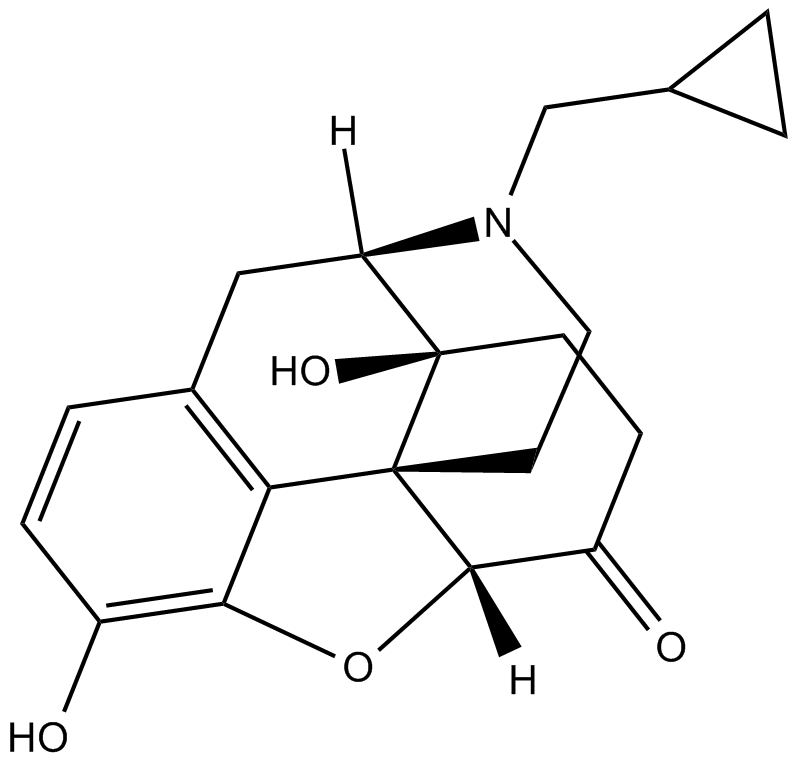Naltrexone |
| Catalog No.GC16206 |
Opioid receptor antagonist
Products are for research use only. Not for human use. We do not sell to patients.

Cas No.: 16590-41-3
Sample solution is provided at 25 µL, 10mM.
Naltrexone is an opioid receptor antagonist approved for the treatment of opioid and alcohol dependence and has been under investigation for tobacco dependence. Naltrexone has been shown to reduce urge to smoke and smoking behavior, and increase quit rates during 4 to 12 weeks of active treatment. [1]
There are three types of opioid receptors classified according to their specific ligands, the μ-opioid receptor (OPRM1), the k-opioid receptor (OPRK1) and the σ-opioid receptor (OPRD1). There is a high concentration of μ-opioid receptors in areas of the brain that have been implicated in the reward pathway associated with alcohol and the μ-opioid receptor is increasingly becoming a main focus in genetic studies of alcohol addiction.[2]
Naltrexone is thought to act as a competitive antagonist at mc, κ, and δ receptors in the CNS, with the highest affintiy for the μ receptor. Naltrexone competitively binds to such receptors and may block the effects of endogenous opioids. This leads to the antagonization of most of the subjective and objective effects of opiates, including respiratory depression, miosis, euphoria, and drug craving. The major metabolite of naltrexone, 6-β-naltrexol, is also an opiate antagonist and may contribute to the antagonistic activity of the drug.
In the mouse, rat and guinea pig, the oral LD50s are 1,100-1,550 mg/kg; 1,450 mg/kg; and 1,490 mg/kg; respectively. High doses of naltrexone (generally ≥1,000 mg/kg) produce salivation, reduced activity, tremors, and convulsions. [1] Pharmacokinetic data also indicates that standard oral naltrexone treatment (generally 50 mg), which has shown moderate to good clinical efficacy in the management of alcohol dependence, is likely to result in peak blood concentrations of 8.5 ng/ml and trough concentrations of less than 0.2 ng/ml within 12 h. Higher doses of oral naltrexone (150 mg/day) have been shown to reduce significantly alcohol consumption (percentage of drinking days, P < 0.0001 and number of drinks per drinking day, P < 0.0001) among those with strong craving, without significant adverse effects.[2]
References:
[1] Daniel J. Fridberg, Dingcai Cao, Jon E. Grant, and Andrea C. King. Naltrexone Improves Quit Rates, Attenuates Smoking Urge, and Reduces Alcohol Use in Heavy Drinking Smokers Attempting to Quit Smoking. CLINICAL AND EXPERIMENTAL RESEARCH Vol. 38, No. 10 October 2014.
[2] Gary K.Hulse. Improving clinical outcomes for naltrexone as a management of problem alcohol use. British Journal of Clinical Pharmacology. DOI:10.1111/j.1365-2125.2012.04452.x
Average Rating: 5 (Based on Reviews and 30 reference(s) in Google Scholar.)
GLPBIO products are for RESEARCH USE ONLY. Please make sure your review or question is research based.
Required fields are marked with *




















